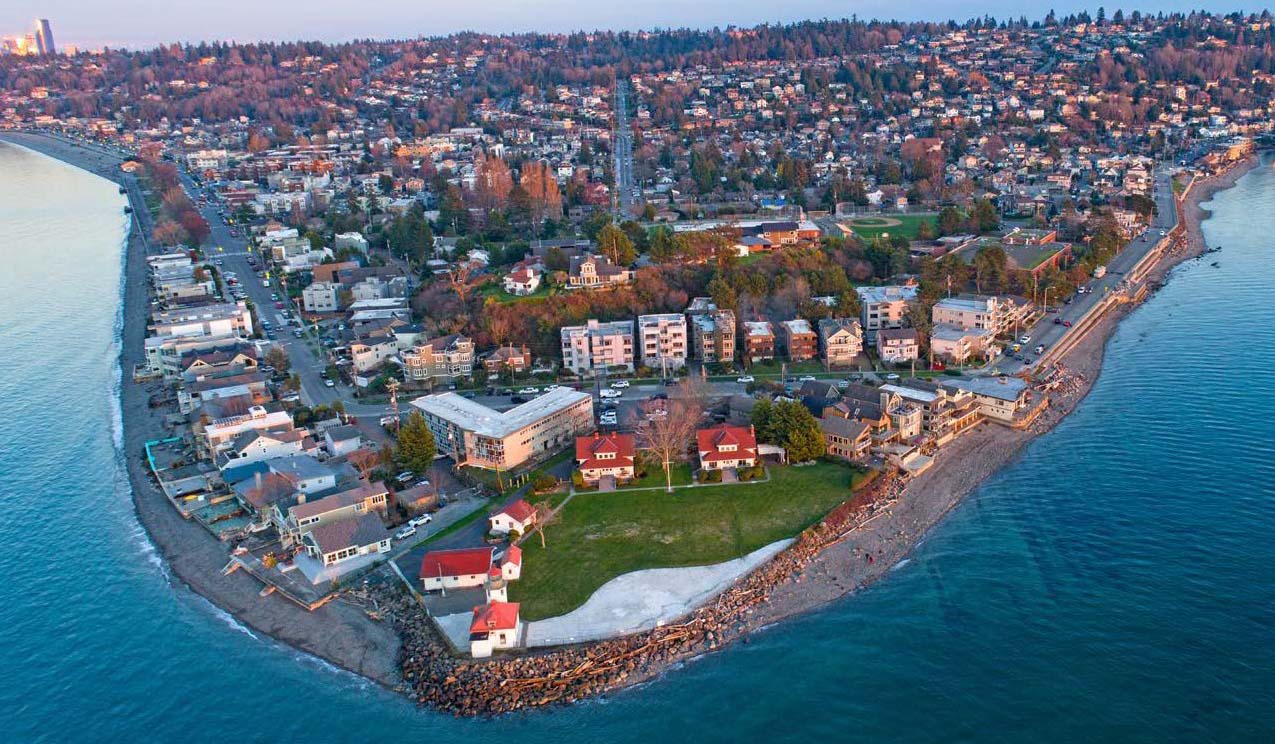In March 2020, coinciding with shutdowns caused by the COVID-19 pandemic, the West Seattle Bridge, the main bridge connecting West Seattle with the rest of the city of Seattle, was closed to traffic because of structural deterioration. The unexpected closure of the bridge disrupted passenger and freight mobility to/from West Seattle, increasing travel times and generating bottlenecks on the remaining bridges. This negatively affected the livability of the peninsula, as well as its economy and the environment. This project documented the impacts of the closure on freight flow in and out of West Seattle.
West Seattle is on a peninsula, separated from downtown Seattle by the Duwamish Waterway. The West Seattle High-Rise Bridge (WSHB) serves as the primary connector between West Seattle and the rest of the city. On average each day it carries 84,000 vehicles. When it was closed, a second, smaller bridge was also restricted, prioritized for heavy freight, public transit, and emergency vehicles.
The Seattle Department of Transportation engaged the UW Supply Chain Transportation and Logistics Center to explore the impacts of the WSHB closure on freight flow in and out of West Seattle. The research team interviewed and surveyed 19 local businesses and freight carriers in the study area—including parcel delivery carriers, food and beverage carriers, supermarkets and restaurants, retailers, manufacturers, the Port of Seattle, and five neighborhood and local business associations.
The surveys revealed that while supermarkets did not report major changes, smaller food establishments such as restaurants did report cancelled, delayed, and incomplete deliveries. To cope with these disruptions, they reported having to pick up goods themselves from supplier locations, relying on smaller vehicles, such as personal cars or business vans, to do so. They also reported having to move their supply delivery destinations to locations off the peninsula and/or having to buy their supplies from local West Seattle supermarkets. Carriers reported that decreased restaurant demand in the pandemic led to reduced delivery volume to food and beverage businesses on the peninsula. This caused carriers to both deliver less frequently and consolidate their deliveries by delivering to more customers per route, as well as reducing the number of their routes. In contrast, increased e-commerce demand during the pandemic meant rising parcel volumes, causing parcel carriers to increase the number of routes serving the peninsula. Port and industry operations did not seem to experience major disruptions, as they were still authorized to use the lower bridge to cross the Duwamish Waterway. Service vehicles from outside the peninsula sometimes refused to serve establishments on the peninsula, citing longer drive times. Both smaller and larger retail and service establishments reported difficulties in hiring new employees in the wake of increased commute times after the bridge closure.
To help with data-driven decision making, the team developed a Freight Trip Generation (FTG) model that estimated the daily number of freight vehicle trips in the study area across all activity types and to residential, commercial, and industrial buildings to be approximately 27,700. Of those 27,700 daily freight deliveries and pickups, 74 percent were generated by the West Seattle peninsula. And of those deliveries and pick-ups, 94 percent were to residential buildings.
The team also analyzed a host of variables to determine the impact of the bridge closure on each of the study area’s 13 residential and industrial neighborhoods. The most affected neighborhoods were North Admiral, Genesee, Alki, Seaview, Gatewood, and Fairmount Park. These neighborhoods had the largest share of FTG performed by vehicles that were not allowed to use the lower bridge and that experienced the longest re-route times.
The researchers offered numerous freight strategies that could help mitigate the effects of the bridge closure on peninsula residents, carriers, and businesses. The recommended short-term mitigation strategies largely centered on expanding lower bridge access while taking steps to ensure that the expanded access would not impede the free flow of traffic. These strategies could include granting bridge permits to small businesses, granting bridge permits to parcel carriers, making permits time-based, staging container trucks, and promoting zero-emission vehicles.
The recommended long-term mitigation strategies largely centered on efforts to support local businesses on both the supply and demand sides. These strategies could include creating a centralized receiving station, creating a shared freight vehicle fleet, and taking steps to increase the West Seattle customer base. To support smaller businesses, several strategies were recommended to rebuild both the local and off-peninsula customer base: promote access to West Seattle by bicycle and other micro-mobility modes in partnership with local businesses to attract new customers; encourage “Stay Local” and “Shop Local” campaigns to support local businesses and keep trips contained within the peninsula; and deploy a parcel locker system at local businesses that would receive packages from multiple carriers to increase foot traffic at local commercial areas on the peninsula.
Authors:
Anne V. Goodchild
Giacomo Dalla Chiara
Nota Goulianou
Seyma Gunes
UW Department of Civil and Environmental Engineering
Sponsor: Seattle Department of Transportation

